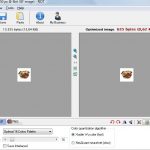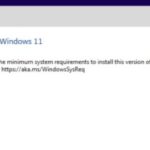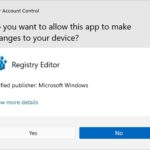Windows is one of the most popular operating systems in the world. It’s used by millions of people on their computers, laptops, and even smartphones. But how much do you really know about Windows? Here are some interesting facts that you may not have known.
Interesting Facts about Windows OS
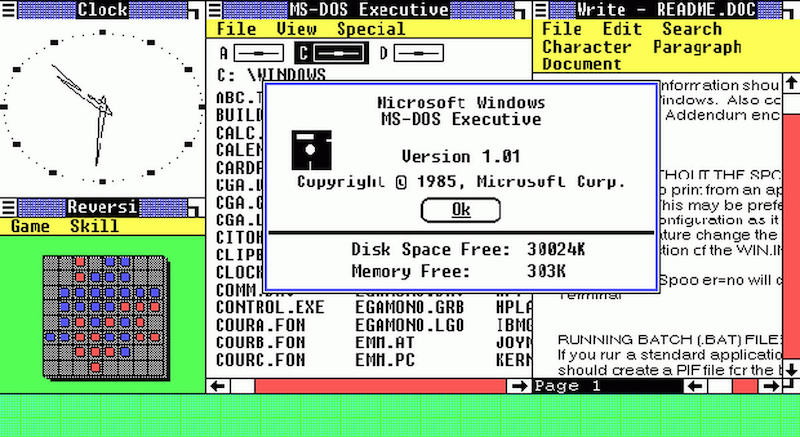
- When most people think of Microsoft Windows, they think of the modern versions that are used on desktop and laptop computers today. However, Windows 1.0 was the first major release of Microsoft Windows, and it was a milestone in the development of graphical operating systems. Although it was primitive by today’s standards, Windows 1.0 laid the foundation for the success of subsequent versions of Windows. It introduced many key features, including the use of a mouse to interact with graphical elements on the screen, windows that could be opened and closed, and icons that represented files and programs.
- The original Windows 1.0 used a 16-bit interface, with a size of less than 1MB. It came complete with many similar now popular software such as Paint, Calculator, Notepad, and Word Processor. Despite being primitive by today’s standards, it represented a major step forward in terms of user-friendliness and functionality.
- Microsoft Office was first published for Macintosh in 1989, a full year before it was released for Windows. The Mac version of Office included Word, Excel, and PowerPoint, which quickly became the de facto standard for word processing, spreadsheets, and presentations.
- Did you know that it almost had a different name? Initially, Bill Gates and his team were planning to call the program “Interface Manager.” However, they eventually settled on the name ‘Windows’ because it reflected the program’s graphical interface that allows multiple windows to run various tasks at once.
- The world’s most viewed photograph is Windows XP’s default wallpaper. The photo, which was taken by Charles O’Rear, is called “Bliss” and depicts a rolling green hill with a blue sky. Microsoft chose the image because they wanted to create a default wallpaper that would be soothing and relaxing. And it seems to have worked! “Bliss” has been loved by millions of people around the world and has become one of the most iconic images of our time.
- Microsoft is a combination of microcomputers and software. The company began as “Micro-soft” before the hyphen was dropped in 1976.
- The first virus that targeted Microsoft Windows, WinVer 1.4, was introduced in 1992. Since then, the Windows platform has become the most popular target for virus writers. This is due to several factors, including the widespread use of Windows, the ease of writing viruses for the platform, and the fact that viruses can spread quickly on networks of computers running Windows.
- Before Windows 95, users had to access programs by going through a directory hierarchy. The Start Menu, Taskbar, and Close buttons included in Windows 95 made it easier to find and use programs. Windows 95 also introduced the concept of virtual memory, which allowed programs to use more memory than was physically available on the computer.
- Windows NT was designed to be a “Portable System” for businesses. It could be used on multiple types of hardware and had a well-designed set of features that made it attractive to business users. However, Windows NT was not without its problems. It was often criticized for being unstable and for having poor performance on lower-end hardware. In addition, the cost of upgrading to newer versions of Windows NT was often prohibitive for many businesses. As a result, Windows NT never achieved the widespread adoption that Microsoft had hoped for.
- Although creating a new folder on Windows is easy, there is actually one little quirk that you need to be aware of. You cannot create a folder named “CON” on Windows. Furthermore, Windows also does not allow some other special characters in folder names. For example, you can’t use the following characters: \ / : * ? ” < > | .
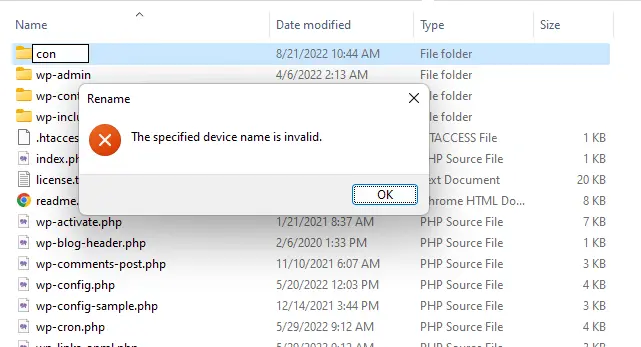
- The final MS-DOS-based Windows OS was Windows 98. Released in June 1998, it was a minor upgrade over Windows 95, with only a few new features. One of the most notable new features was the Fat32 file system, which allowed for much larger hard drive sizes than the previous FAT16 file system. Another new feature was support for USB devices, although this was limited to certain models of PCs. Despite its minor changes, Windows 98 was a popular operating system and remained in use until 2001, when it was succeeded by Windows XP.
- After Microsoft released Windows XP on October 25, 2001, the product became an instant success and bestseller. The operating system was designed to be user-friendly and easy to use, and it featured many new and improved features over previous versions of Windows. One of the most popular features of XP was its support for multiple user accounts, which allowed each user to customize their desktop environment. In addition, XP featured an improved taskbar and Start menu, as well as a new set of icons and graphical themes. Overall, Windows XP was a huge success for Microsoft, and it cemented the company’s position as the leading provider of desktop computing software.
- On July 29, 2015, Microsoft released Windows 10, a new operating system that marked a significant departure from its predecessor. Along with a host of new features and improvements, Windows 10 also included a digital personal assistant called Cortana. Cortana was designed to be a helpful and insightful companion, capable of answering questions, making recommendations, and performing other useful tasks.
- Microsoft is one of the top 5 patent holders in the US, with over 10,000 patents to its name. The company files around 3,000 patents per year on average, with a portfolio that encompasses everything from software and hardware to artificial intelligence and virtual reality. Microsoft’s patents are a key part of its business strategy, providing the company with a competitive edge and helping to protect its intellectual property.
- Windows Nashville was an unreleased version of Windows that was under development in 1995. The main goal of this release was to make it easier for users to connect to the internet and to make better use of multimedia content. One of the most notable features of Nashville was the inclusion of an internet Explorer toolbar, which would have made it easier for users to access the internet from within Windows.
- Windows Cairo was another unreleased version of Windows that was intended for release between 1991 and 1996. Cairo was intended to follow Bill Gates’ vision of “information at your fingertips”.
- Windows Neptune was another dropped version of Windows that was intended for release in 1999. This release was intended to be a more consumer-friendly version of Windows, with an emphasis on simplifying the user interface.
